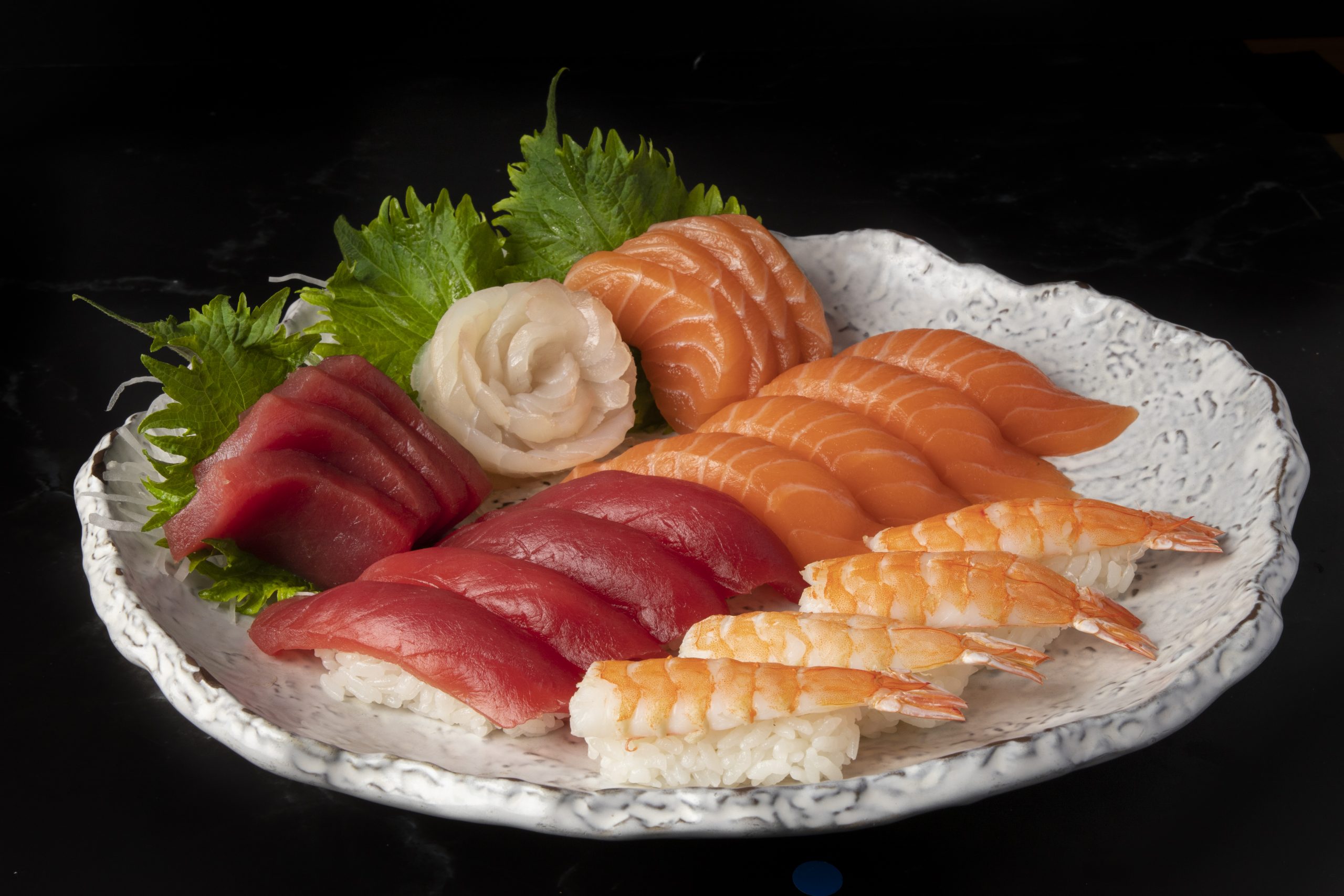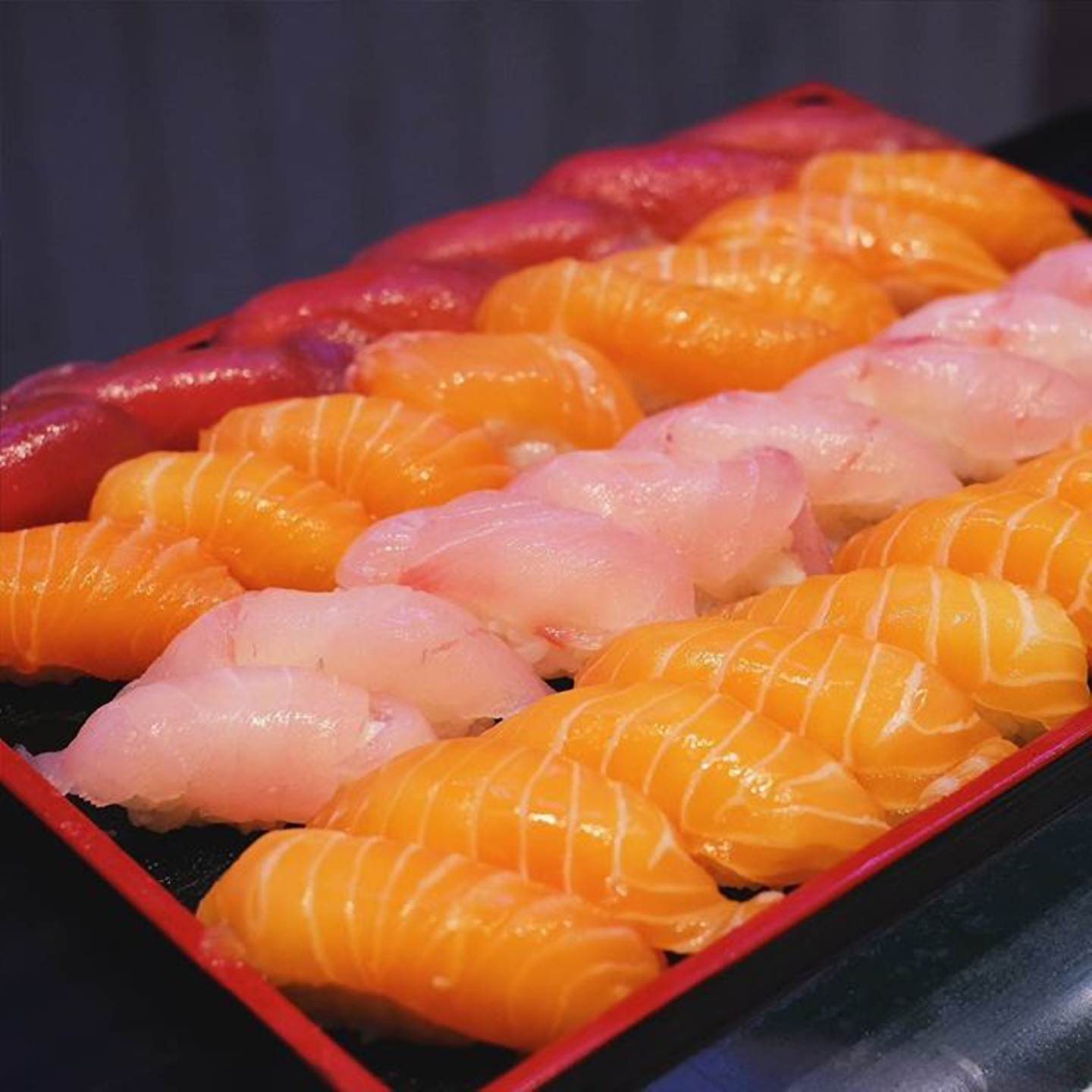Hey there foodies and sushi lovers! Let's dive straight into the world of sashimi sush, a culinary masterpiece that’s been captivating taste buds worldwide. Imagine this—thinly sliced fresh fish, served with just a hint of soy sauce and wasabi. It’s simple, yet it’s an explosion of flavors that leaves you craving more. Whether you’re a seasoned sushi connoisseur or a newbie to the world of raw fish, sashimi sush is an experience you don’t want to miss. So, buckle up and let’s explore the ins and outs of this delectable dish!
What makes sashimi sush so special? Well, it’s not just about the fish—it’s about the art, the precision, and the dedication that goes into every single slice. From the way the fish is sourced to how it’s presented on your plate, every step is a testament to the chef’s skill and passion. And trust me, once you’ve had a bite of sashimi sush, you’ll understand why it’s considered one of the finest examples of Japanese cuisine.
Now, let’s talk numbers for a moment. Did you know that the global sushi market is expected to reach $43.7 billion by 2028? That’s right, folks! Sashimi sush isn’t just a trend—it’s a cultural phenomenon that’s here to stay. And whether you’re dining at a high-end restaurant or grabbing a quick bite at your local sushi spot, the quality of sashimi sush can make all the difference. So, let’s dig deeper and uncover the secrets behind this delicious dish.
Read also:Why The Haute Blow Dry Bar Is Every Hair Days Dream Come True
What is Sashimi Sush Anyway?
Let’s break it down. Sashimi sush is essentially raw fish served without rice. Unlike traditional sushi, which combines vinegared rice with seafood or vegetables, sashimi focuses solely on the fish itself. It’s all about showcasing the natural flavors and textures of the seafood. And let me tell ya, when it’s done right, it’s pure magic.
But here’s the thing—sashimi isn’t just about any old fish. The quality of the fish matters big time. Chefs go to great lengths to source the freshest, highest-quality seafood available. From tuna to salmon to yellowtail, each type of fish brings its own unique flavor profile to the table. And when paired with the right condiments, it’s a match made in heaven.
Key Ingredients in Sashimi Sush
Alright, let’s talk ingredients. Here’s a quick rundown of what typically goes into making sashimi sush:
- Fresh seafood—tuna, salmon, yellowtail, and more
- Soy sauce for dipping
- Wasabi for that extra kick
- Ginger slices for a refreshing palate cleanser
Each of these ingredients plays a crucial role in enhancing the overall dining experience. And while the fish is the star of the show, the condiments help bring out its natural flavors in the most delicious way possible.
History of Sashimi Sush
Now, let’s take a trip back in time to explore the origins of sashimi sush. This dish has been around for centuries, with roots tracing back to ancient Japan. Back in the day, people would eat raw fish as a way to preserve it before refrigeration was invented. Over time, the practice evolved into the art form we know today.
And here’s a fun fact—the word “sashimi” literally means “pierced body” in Japanese. This refers to the method of slicing the fish in a way that enhances its texture and presentation. So, the next time you’re enjoying a plate of sashimi, remember that you’re partaking in a centuries-old tradition!
Read also:Alexa Pearl Photos The Ultimate Guide To Her Captivating Journey
Cultural Significance of Sashimi Sush
Sashimi sush isn’t just a dish—it’s a cultural icon. In Japan, it’s often served during special occasions and celebrations. It’s a symbol of hospitality and respect, and it’s considered a delicacy that only the finest chefs can master. And as Japanese cuisine continues to gain popularity worldwide, sashimi sush has become a staple on menus everywhere.
How is Sashimi Sush Prepared?
Preparing sashimi sush is no easy feat. It requires skill, precision, and a deep understanding of the ingredients. Here’s a step-by-step guide to how it’s done:
First, the fish is carefully selected and prepared. Chefs look for the freshest catch of the day, ensuring that the fish is of the highest quality. Once the fish is ready, it’s sliced into thin, delicate pieces using a sharp knife. The technique used to slice the fish is crucial, as it affects the texture and presentation of the dish.
Next, the sashimi is arranged on a plate, often garnished with daikon radish or shiso leaves. It’s all about creating a visually appealing presentation that’s as stunning as the flavors themselves. And finally, the sashimi is served with soy sauce, wasabi, and ginger, allowing diners to customize their experience to their liking.
Tips for Choosing the Best Sashimi Sush
So, how do you know if you’re getting the best sashimi sush? Here are a few tips to keep in mind:
- Look for restaurants with a reputation for high-quality seafood
- Check the freshness of the fish—sashimi should have a vibrant color and firm texture
- Ask about the sourcing of the fish—sustainable practices are always a plus
By following these guidelines, you’ll be sure to enjoy a delicious and authentic sashimi sush experience every time.
Health Benefits of Sashimi Sush
Let’s talk health for a moment. Sashimi sush is not only delicious, but it’s also packed with nutritional benefits. Raw fish is a great source of omega-3 fatty acids, which are essential for heart health. It’s also low in calories and high in protein, making it a great option for those looking to maintain a healthy diet.
And here’s another bonus—sashimi sush is free from added sugars and unhealthy fats. So, if you’re trying to eat clean, this dish is a great choice. Just be mindful of the condiments you use, as soy sauce can be high in sodium.
Nutritional Breakdown of Sashimi Sush
Here’s a quick breakdown of the nutritional content of sashimi sush:
- Calories: Around 100-150 per serving
- Protein: 20-25 grams
- Fat: 5-10 grams
- Carbohydrates: Negligible
As you can see, sashimi sush is a nutrient-dense dish that’s perfect for health-conscious eaters.
Popular Types of Sashimi Sush
Not all sashimi sush is created equal. There are several types of fish that are commonly used in sashimi, each with its own unique flavor profile. Here are a few of the most popular varieties:
- Tuna—rich and buttery with a deep red color
- Salmon—soft and flaky with a mild flavor
- Yellowtail—firm and slightly sweet with a delicate texture
- Snapper—light and refreshing with a subtle sweetness
Each type of fish brings something different to the table, making sashimi sush a versatile and exciting dish to explore.
Pairing Sashimi Sush with Drinks
Now, let’s talk about the perfect beverage to pair with sashimi sush. Whether you’re in the mood for something refreshing or something with a bit more kick, there’s a drink out there for everyone. Here are a few popular options:
- Sake—warm or cold, it’s a classic choice that complements the flavors of sashimi
- Green tea—a soothing and aromatic option that pairs beautifully with raw fish
- White wine—light and crisp, it enhances the delicate flavors of the fish
So, the next time you’re enjoying a plate of sashimi sush, consider pairing it with one of these drinks for an elevated dining experience.
Where to Find the Best Sashimi Sush
Looking for the best sashimi sush in town? Here are a few tips to help you find the perfect spot:
First, do your research. Check out online reviews and ratings to see what others are saying about the restaurant’s sashimi. You can also ask for recommendations from friends or family who are sushi lovers. And don’t be afraid to try new places—you never know where you might discover your new favorite spot!
Another thing to consider is the restaurant’s sourcing practices. Look for places that prioritize sustainability and use fresh, high-quality ingredients. This not only ensures a better dining experience but also supports responsible fishing practices.
DIY Sashimi Sush at Home
Feeling adventurous? Why not try making sashimi sush at home? Here’s what you’ll need:
- Fresh seafood—tuna, salmon, or your favorite fish
- A sharp knife for slicing
- Soy sauce, wasabi, and ginger for serving
While it may seem intimidating at first, with a little practice, you’ll be slicing like a pro in no time. Just remember to use the freshest ingredients and follow proper food safety guidelines to ensure a safe and delicious meal.
Conclusion: Why Sashimi Sush is a Must-Try
And there you have it—a comprehensive guide to sashimi sush. From its rich history to its health benefits and delicious flavors, sashimi sush is a dish that deserves a place on every sushi lover’s plate. So, whether you’re dining out or cooking at home, don’t miss the opportunity to experience this culinary masterpiece.
Now, it’s your turn! Have you tried sashimi sush before? What’s your favorite type of fish? Leave a comment below and let us know. And if you enjoyed this article, be sure to share it with your friends and family. Who knows, you might just inspire someone to try sashimi sush for the first time!
Table of Contents
- What is Sashimi Sush Anyway?
- Key Ingredients in Sashimi Sush
- History of Sashimi Sush
- Cultural Significance of Sashimi Sush
- How is Sashimi Sush Prepared?
- Tips for Choosing the Best Sashimi Sush
- Health Benefits of Sashimi Sush
- Nutritional Breakdown of Sashimi Sush
- Popular Types of Sashimi Sush
- Pairing Sashimi Sush with Drinks
- Where to Find the Best Sashimi Sush
- DIY Sashimi Sush at Home


